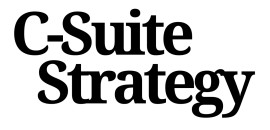
Understanding the value of procurement white papers
Why C-Suite Leaders Should Read Procurement White Papers
Procurement white papers are more than just industry reports—they are a strategic resource for c-suite leaders aiming to create competitive advantage. These documents distill complex procurement trends, supply chain management best practices, and sourcing strategies into actionable insights. For executives, reading a well-crafted white paper can be the difference between reactive decision-making and proactive, data-driven strategy.
- Expert Viewpoints: White papers are authored by procurement supply experts who analyze real-world case studies and share practical recommendations. This gives c-suite leaders a broader view of category management, risk management, and agile sourcing approaches.
- Data-Driven Decisions: The best white papers leverage robust data, helping executives understand spend matters, disruption risk, and emerging supply chain trends. This data-centric approach supports more confident, evidence-based decisions.
- Strategic Alignment: Procurement insights from white papers can be mapped directly to business objectives, supporting the journey start for new initiatives or refining existing strategies. This alignment is crucial for maintaining agility in today’s volatile markets.
- Competitive Intelligence: By reading procurement white papers, c-suite leaders gain early access to innovative sourcing models and risk mitigation techniques, helping to create competitive differentiation in their industry.
As you explore how procurement intelligence can drive innovation, enhance stakeholder collaboration, and measure impact, it’s clear that white papers are a foundational tool for executive decision-making. For a deeper understanding of how integrated business solutions support c-suite strategy, read this guide on integrated business solutions.
Aligning procurement insights with company strategy
Bridging Procurement Insights and Strategic Goals
For the C-suite, aligning procurement insights with overall company strategy is not just a best practice—it is a necessity for creating competitive advantage. Procurement white papers offer a unique, data-driven view into sourcing, supply chain management, and category management trends. When leaders read white papers, they gain access to in-depth analysis and case studies that illustrate how procurement can directly influence business outcomes.
- Strategic Sourcing: White papers often highlight best practices in sourcing and supply chain agility, helping executives understand how procurement can support business growth and resilience.
- Risk Management: By examining disruption risk and risk management strategies, these reports enable leaders to anticipate and mitigate threats to supply chains.
- Spend Matters: Insights from procurement supply data and spend analysis can inform smarter investment decisions and drive efficiency across the organization.
Authors of procurement white papers frequently share real-world examples of agile supply chain management and innovative sourcing models. This intelligence helps the C-suite identify which procurement strategies align best with their company’s long-term vision and operational needs.
To fully leverage these insights, it is essential to foster collaboration between procurement and other business units. Sharing findings from white papers can spark productive discussions, ensuring that procurement’s role in shaping strategy is recognized and integrated at every level.
For more on how remote strategic advisors are shaping this alignment, explore the evolving landscape of C-suite strategy.
Identifying emerging risks and opportunities
Spotting Disruption Risk and Opportunity in Procurement Supply Chains
In today’s volatile business landscape, procurement white papers are essential for C-suite leaders seeking to anticipate and respond to disruption risk. These papers offer a data-driven view of supply chain management, helping executives identify both emerging risks and untapped opportunities. By reading white papers from credible authors, leaders gain access to case studies and best practices that illuminate how agile sourcing and category management can create competitive advantage.
- Risk management: White papers often provide in-depth analysis of supply chain vulnerabilities, such as geopolitical shifts, supplier insolvency, or technology disruptions. This intelligence supports proactive risk management strategies, enabling your business to build resilience and agility.
- Opportunity identification: Procurement reports highlight trends in sourcing and spend matters, revealing areas where your company can innovate or optimize spend. For example, insights on sustainable sourcing or digital transformation can help you stay ahead of competitors.
- Agility in action: The best procurement supply chain management papers share real-world examples of organizations that have successfully navigated disruption. These case studies provide actionable steps for enhancing agility and maintaining business continuity.
Integrating these insights into your strategic journey start is not just about avoiding pitfalls. It’s about leveraging procurement intelligence to create competitive advantage and drive growth. For a deeper dive into how board-level collaboration can further strengthen your risk management approach, explore this guide on enhancing board dynamics for strategic success.
Driving innovation through procurement intelligence
Leveraging Procurement Intelligence for Innovation
Procurement white papers are more than just industry reports; they are powerful tools for driving innovation across the business. When leaders read white papers focused on procurement supply and sourcing, they gain a broader view of emerging trends, best practices, and disruptive technologies shaping supply chains. This intelligence can spark new ideas and help create competitive advantage in a rapidly evolving market.
- Agile decision-making: White papers often showcase case studies where agile procurement strategies have enabled companies to respond quickly to disruption risk. By studying these examples, executives can adapt their own supply chain management to be more resilient and responsive.
- Data-driven insights: Authors of procurement white papers typically analyze large sets of data, offering actionable recommendations on spend matters, risk management, and category management. This data can inform strategic sourcing decisions and support the journey start toward more innovative procurement models.
- Cross-industry inspiration: Reading papers from outside your immediate sector can reveal new approaches to procurement strategic planning. For example, a white paper on digital transformation in supply chains might inspire a fresh approach to supplier collaboration or risk mitigation.
Innovation thrives when leaders are willing to skip content that is routine and instead focus on the insights that challenge conventional thinking. By sharing relevant white papers across the C-suite, teams can align on new priorities, identify disruption risk early, and build more agile supply chains. Ultimately, procurement intelligence is not just about cost savings—it is about creating sustainable, strategic value for the entire business.
Enhancing stakeholder collaboration
Building Bridges Across the Business
Procurement white papers are more than just reports—they are tools that can help break down silos and foster collaboration across the business. When leaders read white papers, they gain a broader view of how procurement supply strategies impact the entire supply chain, from sourcing to delivery. This shared understanding is crucial for agile decision-making and effective risk management.
- Common language: White papers provide a shared vocabulary for discussing supply chain management, category management, and sourcing best practices. This helps align teams and ensures everyone is on the same page when it comes to strategic goals.
- Data-driven discussions: By referencing data and case studies from credible authors, white papers encourage fact-based conversations. This approach reduces friction and helps stakeholders focus on what matters most—creating competitive advantage and managing disruption risk.
- Cross-functional insights: When procurement shares key findings from white papers, it invites input from finance, operations, and other departments. This collaborative approach supports agile responses to emerging trends and supply chain risks.
Encouraging teams to read full white papers and share their perspectives can also spark innovation. For example, a report on supply chain agility might inspire new approaches to sourcing or risk management. Over time, this habit of sharing and discussing procurement strategic insights helps the business stay ahead of disruption risk and strengthens the company’s competitive position.
Ultimately, procurement white papers are not just for the procurement team—they are a resource for the entire c-suite. By leveraging these papers, leaders can create a culture of collaboration, continuous improvement, and strategic alignment across the organization.
Measuring impact and continuous improvement
Tracking Progress and Demonstrating Value
For the c-suite, measuring the impact of procurement white papers is not just about ticking boxes. It’s about understanding how procurement intelligence translates into real business outcomes. The journey starts with setting clear KPIs that align with your company’s strategic goals. These could include cost savings, supply chain agility, risk management improvements, or enhanced category management.
- Data-driven decision making: Use the data and case studies found in procurement white papers to benchmark your current performance. Compare your sourcing strategies and supply chain management practices against industry best practices and emerging trends highlighted in these reports.
- Continuous feedback loops: Encourage teams to share insights from white papers and report on how these learnings are being applied. This helps foster a culture of continuous improvement and agile adaptation to disruption risk in supply chains.
- Stakeholder engagement: Regularly review the impact of procurement strategic initiatives with key stakeholders. Use findings from white papers to support your view on spend matters, risk mitigation, and the creation of competitive advantage.
Don’t skip content that challenges your current approach. Instead, leverage the authors’ expertise to refine your procurement supply strategy. By consistently reading and applying insights from white papers, you can drive measurable improvements and create competitive differentiation. Remember, the best results come from integrating procurement intelligence into every stage of your business strategy, ensuring your organization remains agile and resilient in the face of ongoing change.













